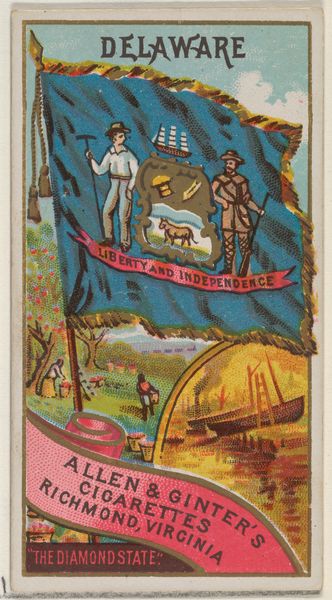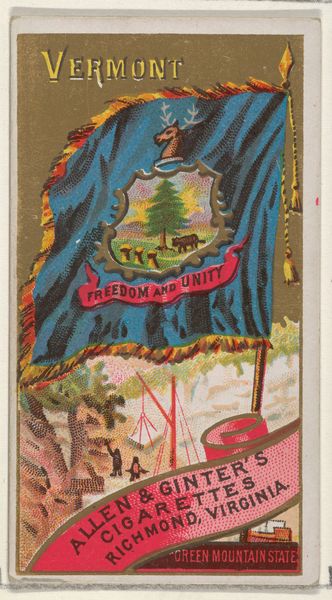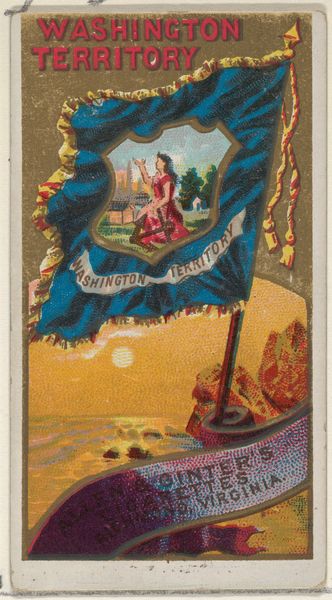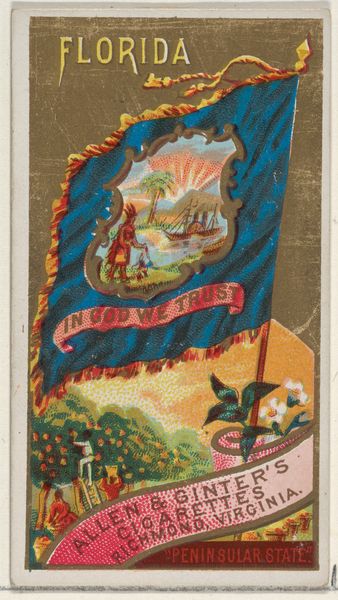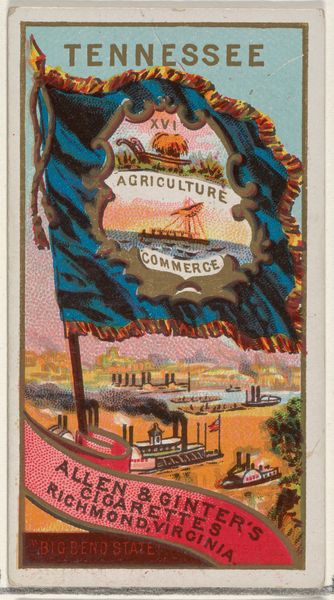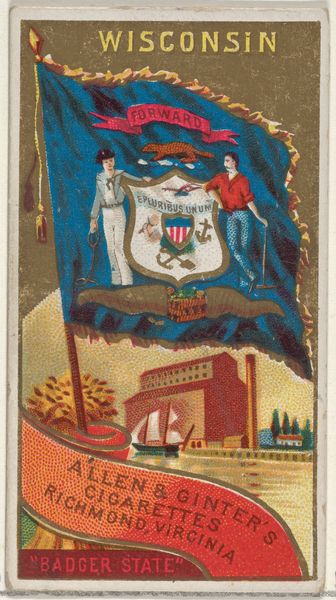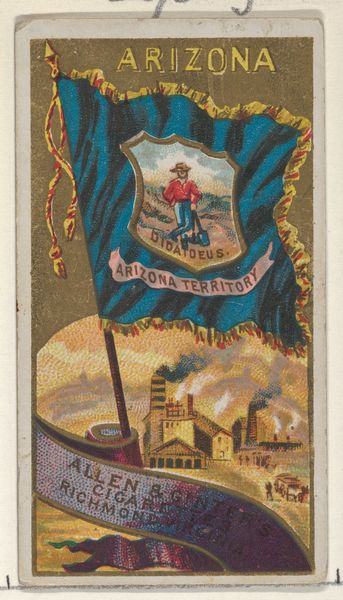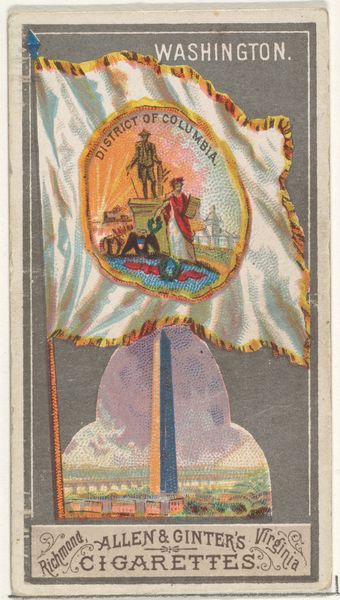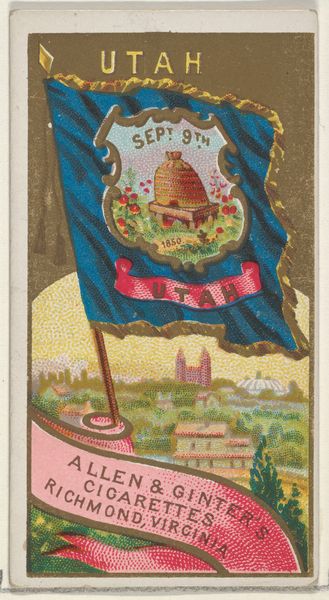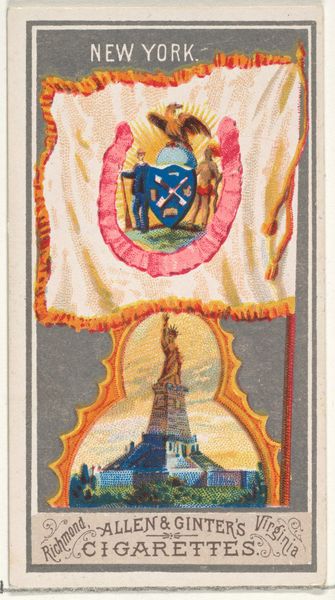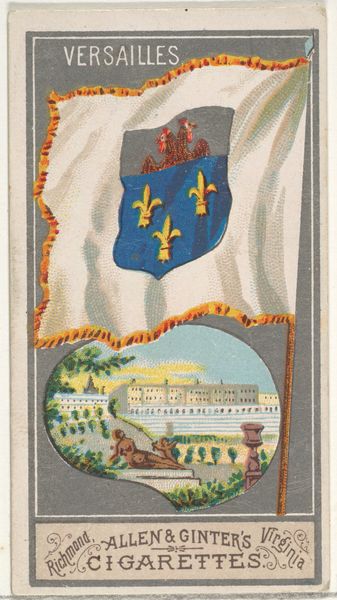
Maine, from Flags of the States and Territories (N11) for Allen & Ginter Cigarettes Brands 1888
0:00
0:00
Dimensions: Sheet: 2 3/4 x 1 1/2 in. (7 x 3.8 cm)
Copyright: Public Domain
Curator: Allen & Ginter's "Maine, from Flags of the States and Territories" presents us with a fascinating example of late 19th-century commercial art, dating back to 1888. Editor: My initial reaction is how incredibly detailed and picturesque this small print is, almost like a miniature landscape painting. Curator: Indeed, it's intricate. We see the state flag prominently displayed, flanked by figures representing labor, above a scene of logging and transport. The visual rhetoric seems to uphold particular idealized visions. Consider the working class and landscape as promoted and consumed through a brand like cigarettes, for instance. Editor: Visually, the composition relies on distinct layers – the flag with its figures, the landscape below, and the ornate banner at the bottom. There is a very clear hierarchy established through this layered technique. Semiotically, what meaning does that structure communicate, intentionally or unintentionally? Curator: Well, we must remember the context in which this was produced. Flags during this era often served as symbols of burgeoning national identity and industrial progress, especially for consumption. Representations of labor were common, though idealized and often obscuring realities of class and race during Reconstruction. Editor: I notice the deliberate choices of color and their intensity in this image. The sharp blues of the flag contrast heavily against the paler yellows and oranges on the lower portion. What significance could be assigned to these decisions in rendering the overall design? Curator: The colors certainly draw attention and enhance the scene's legibility, but it is important to note how the choice of presenting idealized white workers obscures the crucial labor often performed by marginalized communities, specifically Native American and African-American people. The narrative simplifies the socio-political landscape, effectively sanitizing it for the consuming public. Editor: These tensions highlight the way aesthetics become entangled with much larger economic and political agendas. Curator: Exactly. A seemingly innocent decorative object like this tobacco card unveils the complex web of ideology, power, and representation. Editor: Viewing this print now certainly reminds me how imperative it is to deconstruct images with a critical and discerning perspective. Curator: Precisely, interrogating those representations allows for greater understanding of art's role in shaping perception.
Comments
No comments
Be the first to comment and join the conversation on the ultimate creative platform.
